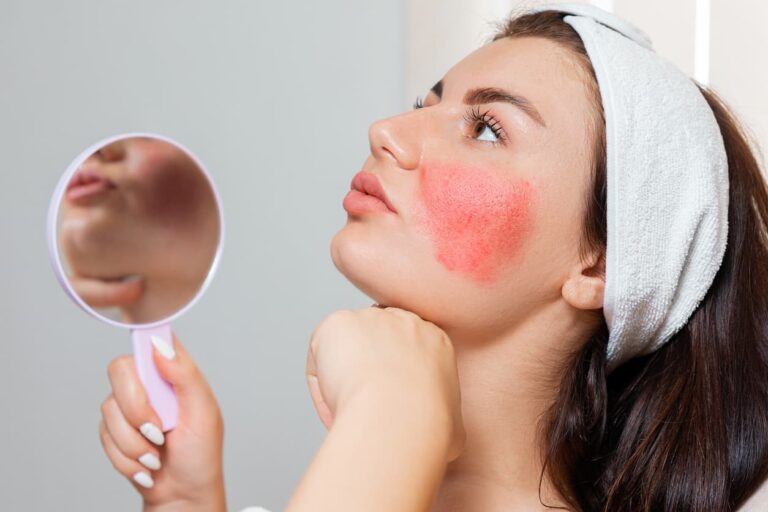March 16, 2023
A chronic inflammatory skin condition affects millions of people worldwide. Let us examine crucial questions and explore evidence-based treatment options for rosacea, including proper skincare regimens, laser therapy, and prescription medications.
Q1) What are the Underlying Causes and Risk Factors of Rosacea?
Rosacea is a multifactorial condition, and its exact etiology remains unclear. Nonetheless, recent research has identified several factors that may contribute to its development, including:
- Genetic predisposition: A family history of Rosacea increases the risk of developing the condition.
- Immune system dysfunction: Abnormalities in innate immunity, such as increased levels of cathelicidin and kallikrein 5, have been implicated in rosacea pathogenesis.
- Demodex mite infestation: A higher density of Demodex folliculorum mites is found in rosacea patients, which may exacerbate the condition.
- Vascular dysfunction: Impaired regulation of cutaneous blood flow, vascular endothelial growth factor (VEGF) overexpression, and angiogenesis contribute to Rosacea’s characteristic erythema and telangiectasia.
Q2) What are the Current Evidence-Based Treatment Options for Rosacea?
A combination of treatments is typically recommended for rosacea patients, including:
- Skincare regimen: Gentle cleansing, moisturizing, and sun protection are essential for minimizing inflammation and preventing flare-ups.
- Topical medications: Metronidazole, azelaic acid, and ivermectin have effectively reduced inflammatory lesions and erythema in rosacea patients. These agents have anti-inflammatory properties and can help reduce redness and inflammation associated with Rosacea.
- Oral medications: Tetracyclines, such as doxycycline, have anti-inflammatory properties and are effective in treating moderate to severe Rosacea. For moderate to severe cases, oral antibiotics such as doxycycline, minocycline, or tetracycline may be prescribed (Canadian Dermatology Association, 2021). These medications have both anti-inflammatory and antimicrobial effects.
- Laser and light therapy: Intense pulsed light (IPL) and pulsed dye laser (PDL) therapies have successfully treated erythema, telangiectasia, and papules associated with Rosacea. Vascular laser therapy can treat patients with persistent redness or visible blood vessels (Journal of the American Academy of Dermatology, 2020). This procedure selectively targets and destroys blood vessels without damaging surrounding tissue.
Q3) How Can Dermatologists Optimize Treatment Outcomes for Rosacea Patients?
To optimize treatment outcomes, dermatologists should consider the following:
- Personalized treatment plans: Dermatologists can develop an individualized approach based on the patient’s rosacea subtype, severity, and specific concerns.
- Patient education: Educate patients about rosacea triggers, proper skincare, and adherence to prescribed treatments.
- Regular follow-ups: Schedule regular follow-ups to assess the efficacy and adjust treatment plans as needed.
Conclusion
Rosacea is a complex dermatological condition that requires a comprehensive understanding of its underlying causes and risk factors. By seeking professional help and consulting a dermatologist, you can effectively manage your condition and ensure a customized treatment plan for the best outcome. A combination of proper skin care, prescription medications, and laser therapy can significantly improve the quality of life for individuals living with Rosacea.
At Vida Dermatology, we have skilled doctors that know what is suitable for your skin. Our dermatologists help you feel like yourself again by curating treatments just for you. Visit us to learn more!



